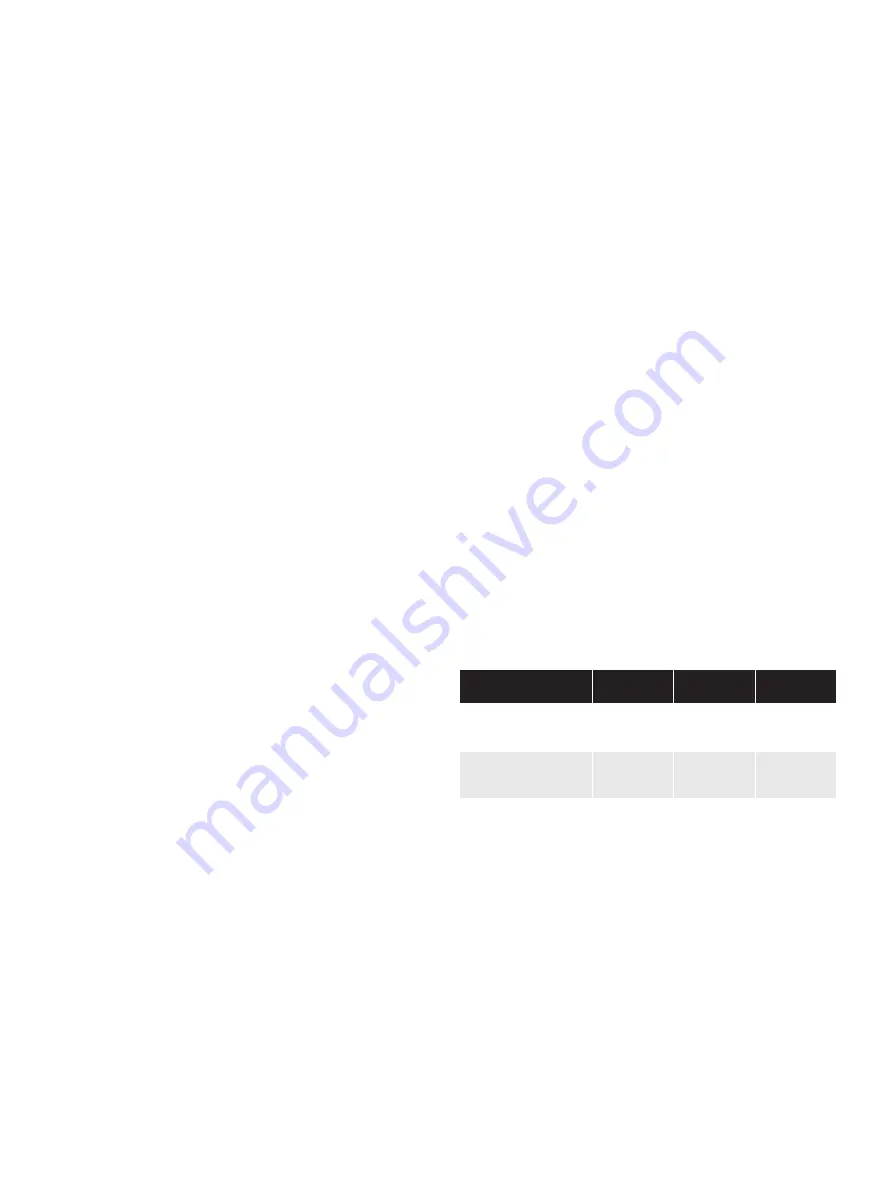
10 | Baker Hughes
Copyright 2023 Baker Hughes Company. All rights reserved.
Case #2 – Regulator is not sensitive enough:
The average value of the cylinder top and cylinder bottom
pressures should be as specified in Step 10 of the Initial
Adjustment. To further improve sensitivity, the system supply
pressure must be increased.
Note:
Check with Baker Hughes before increasing originally
specified power gas to prevent equipment failure due to
overpressure.
Case #3 – Regulator is lagging behind changes in the
control pressure:
Increase both inlet orifice settings. This will cause the regulator
to move faster. Turn the sensitivity adjustment drum to the
left (increasing numbers on the scale) to maintain the desired
cylinder top and cylinder bottom pressures. Finally, turn the
setpoint adjustment screw clockwise to increase the setpoint
for the original desired pressure. Changing the setpoint will not
change the sensitivity.
If the simultaneous increase of both adjustable orifices did not
produce the desired result (i.e., the regulator is still unstable),
it is necessary to set the adjustable orifices to open and close
at different rates. This can be achieved by doing the following:
1. Open both adjustable orifices to #6 and note the total
swing of the regulator. Leave the bottom adjustable orifice
(controlling the opening speed of the regulator) at #6, and
reduce the top adjustable orifice (controlling the closing
speed of the regulator) to #3. If the swing has stopped,
or at least reduced, the direction of speed adjustment is
correct (the closing speed should be smaller than the
opening speed). To find the optimum setting, try several
combinations of adjustable orifice settings.
2. If the swing of the regulator has increased, change the
direction of speed adjustment. Reduce the bottom adjustable
orifice (controlling opening speed of the regulator) to #3,
and increase the top adjustable orifice to #6.
3. If stability of the unit cannot be achieved through different
adjustable orifice setting combinations, the gain of the pilot
is too high. Leave the adjustable orifices at the setting
combination that generates the smallest swing. Turn the
sensitivity adjustment drum to the left (decreasing numbers
on the scale) by small increments until stability is achieved.
4. Finally, turn the setpoint adjustment screw clockwise to
increase the setpoint. Changing the setpoint will not change
the adjusted mode.
Inspection Procedure
As with all precision equipment, it is necessary to periodically test
the pilot to help ensure optimum performance. We recommend
the following procedure once a year:
1. Close the cylinder block valves to prevent the control valve
from moving.
2. Close the valve on the sensing line.
3. Shut off supply pressure and bleed down at the pilot. Note
the settings of the adjustable orifices before removing them
from the orifice assembly. Remove adjustable orifices and
clean them thoroughly. Reinstall using new O-rings, being
sure to install each orifice into the hole from which it was
removed (the orifice and block have matching numbers for
this purpose). Reset adjustable orifices to original settings.
4. Turn on supply pressure.
5. Check the integrity of the pilot seats by changing the sensing
pressure 5 percent above and 5 percent below the setpoint.
One cylinder pressure gauge should climb to full power gas
and the other to zero when the pressure is raised. If the
VRP-CH is equipped with the NBV sensor, the “EX” port
should be bubble tight. The gauge output should reverse
when the pressure is dropped. Failure to build output
pressure to full supply pressure is a sign of a worn pilot
seat. Shut off the power gas supply, bleed off all remaining
pressure, and rebuild the pilot according to procedure in the
Assembly section.
6. Reinstate power gas and soap test around all diaphragms,
vents and orifice assembly. Unless a leak is found, it is not
necessary to disassemble the pilot. If any leaks are found
around the diaphragms, all rubber goods must be replaced.
7. Apply a “False Signal” pressure to the sensing chamber.
Observe operation of the gauges. If any gauges are
defective, replace them.
8. Perform the internal friction test.
Internal Friction Test
Friction may occur if the diaphragms were not centered properly
during installation or dirt has accumulated inside the pilot. To
test for this friction:
1. Adjust the pilot using the initial adjustment procedure.
2. With both cylinder output gauges balanced, turn the
adjusting screw slightly clockwise to decrease cylinder
bottom pressure. Once the pressure reading on the
gauge stops falling, turn the screw back in the opposite
(counterclockwise) direction. The gauge arrow should
immediately reverse.
3. Follow the reverse procedure on the cylinder top gauge.
4. If either of the gauge needles dips first before climbing, the
pilot has friction and must be take apart and reassembled.
Control Valve Type
Opening
Orifice (#)
Closing
Orifice (#)
Sensitivity
Drum (%)
Ball Valve Regulator
w/VB-250 Bleeds to
atmosphere
1-1/2
4-1/2
0
Ball Valve Regulator
w/VB-250 Bleeds to a
pressure system
2
5
50
Globe Valve Regulator
with or without VB-250
Bleeds to a pressure
system
2
6
80











































